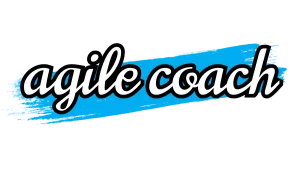Scrum Expansion

As an Agile Coach, I’m always looking for ways to help my teams work better, smarter, and be happier. I always value the last one (happier) more!
After reading the Scrum Guide Expansion Pack that came out in June 2025, I am trying to put my understanding of the same here.
I think of it as a helpful extra handbook to the main 2020 Scrum Guide.
For years, I’ve seen teams across the Globe doing the Scrum events, but sometimes they miss the real spirit of it. This guide might help us fix that. It gives us deeper, more practical advice for the messy, real-world problems we face every day.
Lets break down what this means for you and your team.
A New Way of Thinking About Our Work

This new guide is less about adding new rules and more about changing our soch (thinking) — our way of thinking. It helps us see our work differently.
Dealing with Tricky Work:
Most of our work isn’t like following a simple recipe. It’s “complex,” which means we don’t have all the answers when we start. The guide says that’s okay! We should learn as we go. This way of learning from experience is called empiricism. It has three simple ideas:
Transparency: All work must be out in the open. No one should have secret plans or hidden tasks.
Inspection: We must keep checking our work and our progress frequently to see if we are on the right track.
Adaptation: If we see a problem or a better way to do things, we must change our plan immediately. Don’t be afraid to make changes.
Letting the Best Ideas Come Up:
The best solutions often don’t come from a manager’s plan. They “emerge,” or bubble up, from the team working together. Scrum gives the team a few simple rules and a time limit (like a timebox), and then trusts the team to find the best way to get the job done.
Focusing on the Product, Not Just the Project:
The guide wants us to have “Product Thinking”. Think about it: are we just here to finish a list of tasks and then move on (a project)? Or are we here to build an amazing product that people will use and love for a long time? That’s the difference. This is exactly why Scrum gives us a Product Owner, who cares for the product’s entire life, not a Project Manager, who might only be there for a short time.
The People in Scrum and What They Do

This new guide makes it very clear who does what work. It also introduces some new people who can help us.
The Supporter: A Powerful Friend
This is a new role. Think of a Supporter as a powerful friend in the company, like a senior manager. Their job is to help the team by removing big problems that the team cannot solve on its own. They help make the company a good place for the Scrum team to work.
The Stakeholder: Anyone Who is Interested
A stakeholder is anyone who cares about the product or is affected by it. This includes our customers, the people who use the product (users), and managers. It can even include outside things like government rules.
The Product Owner: The Boss of the Product
The Product Owners job is to make the product a success for the long term. They are a real leader for the product, not just someone who manages a to-do list. The guide says this job needs real product management skills, and the person in this role must be willing to learn them.
The Scrum Master: The Coach for Everyone
The Scrum Master helps the team and makes sure they are working effectively. But their job is bigger now. They are a change agent responsible for helping the entire company understand and use Scrum in the right way.
Product Developers: The People Who Build
These are the experts with the skills to build a usable product Increment in every Sprint. This team can be made up of humans and even AI tools. But the guide is clear: there must be at least one human on the team, and a human is always responsible for the final results.
Big Changes in How We Work: Focusing on What Truly Matters

This is where the guide gets very practical and helps us solve a problem I see in almost every company.
The New ‘Done’: Output vs. Outcome: This is the most important change for me as a coach.
Definition of Output Done:
This is the old “Definition of Done.” It’s a checklist to prove that the work we built (the “output”) is of high quality.
Definition of Outcome Done:
This is a new and powerful commitment. It asks, “Did the feature we built actually make a difference?” This is the “outcome”. For example, our output was a new login button. The outcome is whether the new button reduced login failures by 20%. The guide wants us to focus on the outcome, the real value we deliver to our customers.
Clearer Goals to Guide Us:
Product Goal:
This is our long-term “North Star.” It’s the big objective we are trying to achieve with the product.
Sprint Goal:
This is our short-term mission for the Sprint. It answers the question, “Why are we doing this Sprint?” and it unites the team.
My Final Advice for Your Teams as a coach

As a coach, I know that seeing a big new document like this “Scrum Guide Expansion Pack” can feel a little overwhelming. But please, don’t feel like you have to master everything overnight. The most important thing is to start with small, simple steps. Here is my detailed advice on how your team can begin using this valuable new guide.
Read and Discuss It Together
Don’t just read this guide by yourself. The best place to start is to discuss it as a team. Make it a key topic for your next Sprint Retrospective. Ask yourselves: “What is the biggest problem we are facing right now?” Then, look through the guide to find one or two ideas that could help solve that specific problem. The goal is to find practical solutions, not just to talk about theory.
Pick One Small Thing and Try It
Instead of trying to change everything at once, pick one practical idea from the guide and apply it in your next Sprint. Here are a few examples of what you could do:
Define a Real “Outcome”:
For the next feature you build, try creating a “Definition of Outcome Done”. Before you write any code, ask the question: “If this feature is successful, what change will we see for our customers?”
Maybe the goal is to “reduce customer support calls by 10%” or to “help users finish a task 30 seconds faster.” Write this down as your goal. After you release the feature, check if you actually achieved that outcome.
This shifts your focus from just being busy to creating real value.
Find Your “Supporter”:
Ask your Scrum Master to identify one senior manager or leader in the company who could act as your team’s “Supporter”. I believe this is very important!
The Scrum Master can have a simple conversation with them, explain what the team is trying to achieve, and ask for their help in removing one major roadblock that the team cannot fix on its own. Building this relationship can be a game-changer for the team.
Be More Open in Your Sprint Review:
In your next Sprint Review, try being more courageous.
All these years I have been coaching, I have seen that there is a fear in team members when they are doing the retrospective. I am sure it has to do with Psychological Safety in teams. Take help from your coach to build Psychological Safety in your team.
Don’t just show what you built. Also, share what you learned from the market, what didn’t work as expected, and what new opportunities have emerged. This level of openness builds trust with your stakeholders and leads to better decisions about what to do next.
Remember, this guide reinforces a key idea:
Scrum is a never-ending journey of continuous improvement. It’s about constantly changing your mindset to deal with new challenges. Let’s use these new ideas to make our work more valuable, our products more successful, and our jobs a lot more enjoyable.
Let’s be curious, try one new thing, and learn from it. That is the true path to becoming a great team.
I would like to hear from Jeff Sutherland, John Anthony Coleman and Ralph Jocham about my views here.
Of course, I am still learning!
I will be putting my thoughts in more detail at my blog agilecoach.in in the coming days/weeks/months.
If you are interested, you can always visit the dedicated section for Scrum Guide Expansion to read my views. And of course! correct me when I am wrong.
Link to the complete expansion pack here.
